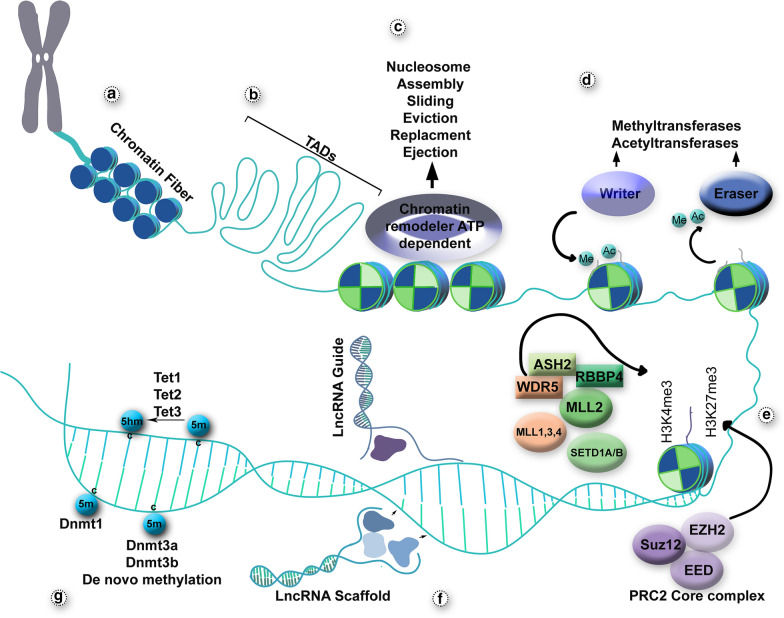Fig. 1.
Schematic depiction of the various layers of epigenetic regulation involved in cell fate determination and differentiation events. a Chromatin folding can be considered as the first layer of transcriptional regulation; nucleosomes are assembled and form 30-nm fibers. b Topologically associating domains (TADs) are genomic regions spanning 0.2 to 1 Mb considered as defined regulatory and structural units. c Binding of ATP-dependent chromatin remodelers to chromatin exposes sites for transcriptional regulation. d Histone tails are subjected to different covalent modifications mainly on their lysine residues. Enzymes known as “writers” (acetyltransferases and methyltransferases) are responsible for adding these modifications, while “erasers” (deacetylases and demethylases) remove them. e Various proteins and protein complexes are involved in establishing bivalent histone marks; the most abundant subunits are components of the PRC2 core complex, which catalyze H3K27 methylation and MLLs, which catalyze H3K4 methylation. f lncRNAs fine-tune gene expression in several ways, such as guiding proteins to a specific location in the genome or acting as a scaffold for other regulatory components. g DNA methyltransferases, such as Dnmt1, Dnmt3a and Dnmt3b add or maintain methyl groups on cytosine residues (5-methylcytosine), while members of the ten-eleven translocation (Tet) family catalyze the oxidation of 5-methylcytosine to 5-hydroxymethylcytosine, which can then be further converted to other intermediates or removed to demethylate the DNA

